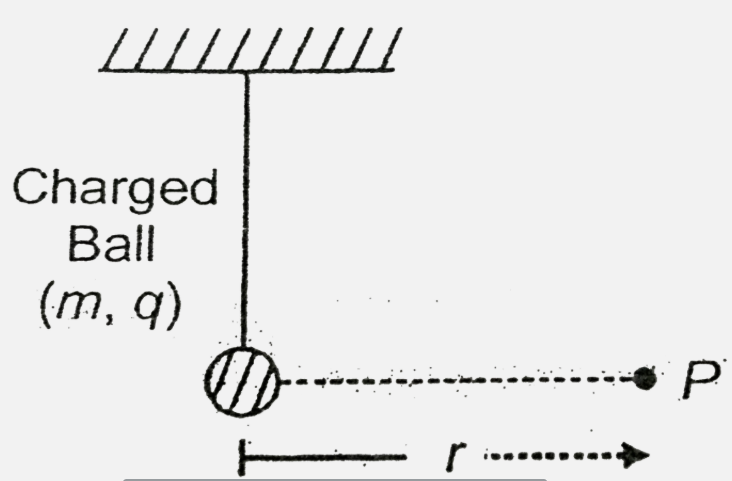The Electric field is given by →E=→Fq0, here the test charge .q0. should be
(a) Infinitesimally small and positive
(b) Infinitesimally small and negative
only a
only .b.
a (or )b
neither .a. or .b.
The correct Answer is:A
Topper's Solved these Questions
- ELECTRIC CHARGES AND FIELDSBOOK - AAKASH SERIESCHAPTER - ELECTRIC CHARGES AND FIELDSEXERCISE - Exercise-II
56 Videos
- ELECTRIC CHARGES AND FIELDSBOOK - AAKASH SERIESCHAPTER - ELECTRIC CHARGES AND FIELDSEXERCISE - Practice Exercise
57 Videos
- ELECTRIC CHARGES AND FIELDSBOOK - AAKASH SERIESCHAPTER - ELECTRIC CHARGES AND FIELDSEXERCISE - Assess Your Self
13 Videos
- DUAL NATURE OF RADIATION AND MATTERBOOK - AAKASH SERIESCHAPTER - DUAL NATURE OF RADIATION AND MATTEREXERCISE - PRACTICE EXERCISEX
44 Videos
- ELECTRIC FIELD AND POTENTIALBOOK - AAKASH SERIESCHAPTER - ELECTRIC FIELD AND POTENTIALEXERCISE - PROBLEMS (LEVEL-II)
32 Videos
Similar Questions
If electric field around a surface is given by ∣∣→E∣∣=Q∈ε0|A| where 'A' is the normal area of surface and Q∈ is the charge enclosed by the surface. This relation of gauss's law is valid when
View SolutionThe electric field at point P due to a charged ball is given by
Ep=14πε0qr2
To measure 'E' at point P, A test charge q0 is placed at point P and measure electric force F upon the test charge. Check whether Fq0 is equal to 14πε0qr2 or not .

View Solution
Knowledge Check
the electric field is given by →E=→Fq0 here the test charge q0 should be (a) Infinitesimally small and positive
(b) Infintestimally small and negativeAonly aBonly bCa (or) bDneither a and bthe electric field is given by →E=→Fq0 here the test charge q0 should be (a) Infinitesimally small and positive
(b) Infintestimally small and negativeAonly aBonly bCa or bDneither a or bIf electric field around a surface is given by ∣∣→E∣∣=Q∈ε0|A| where 'A' is the normal area of surface and Q∈ is the charge enclosed by the surface. This relation of gauss's law is valid when
ASurface is equipotentialBMagnitude of electric field is constantCMagnitude of electric field is constant & the surface is equipotentialDFor all Gaussian surfaces.
The electric field at point P due to a charged ball is given by
Ep=14πε0qr2
To measure 'E' at point P, A test charge q0 is placed at point P and measure electric force F upon the test charge. Check whether Fq0 is equal to 14πε0qr2 or not .

View SolutionAn infinite sheet in xy plane has a uniform surface charge density σ. The thickness of the sheet is infinitesimally small. The sheet begins to move with a velocity →v=vˆi
(i) Find the electric field (→E) and magnetic field (→B) above and below the sheet.
(ii) If the velocity of the sheet is changed to →v=vˆk , find the electric and magnetic field above and below the sheet.
View SolutionA particle having mass m and charge q is released from the origin in a region in which electric field and megnetic field are given by →B=−B0ˆj and →E=→E0ˆk. Find the speed of the particle as a function of its z-coordinate.
View SolutionForce →F acting on a test charge q0 in a uniform electric field →E is
View SolutionForce →F acting on a test charge q0 in a uniform electric field →E is
View Solution
